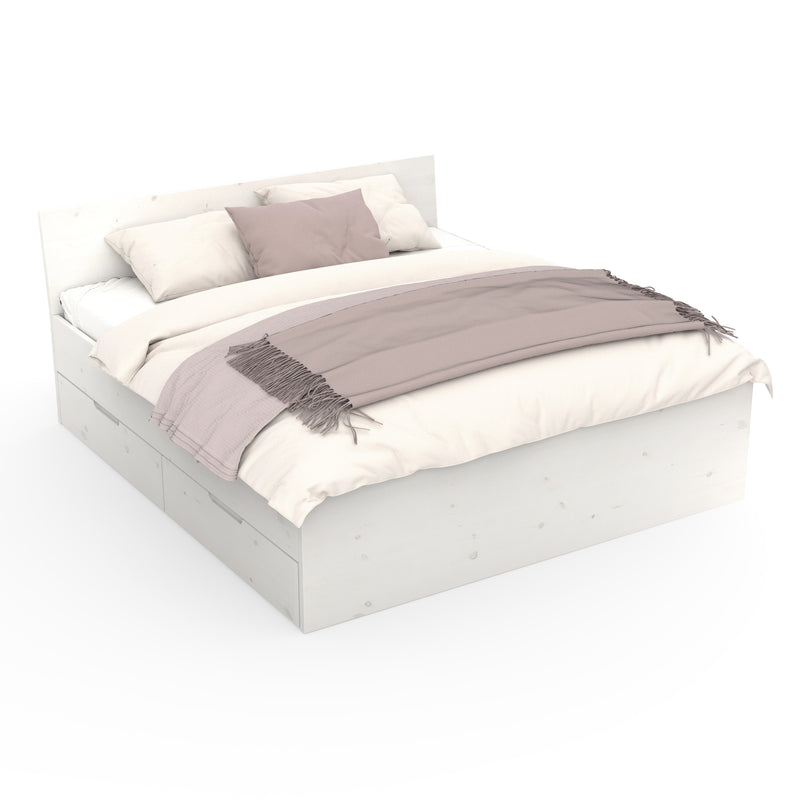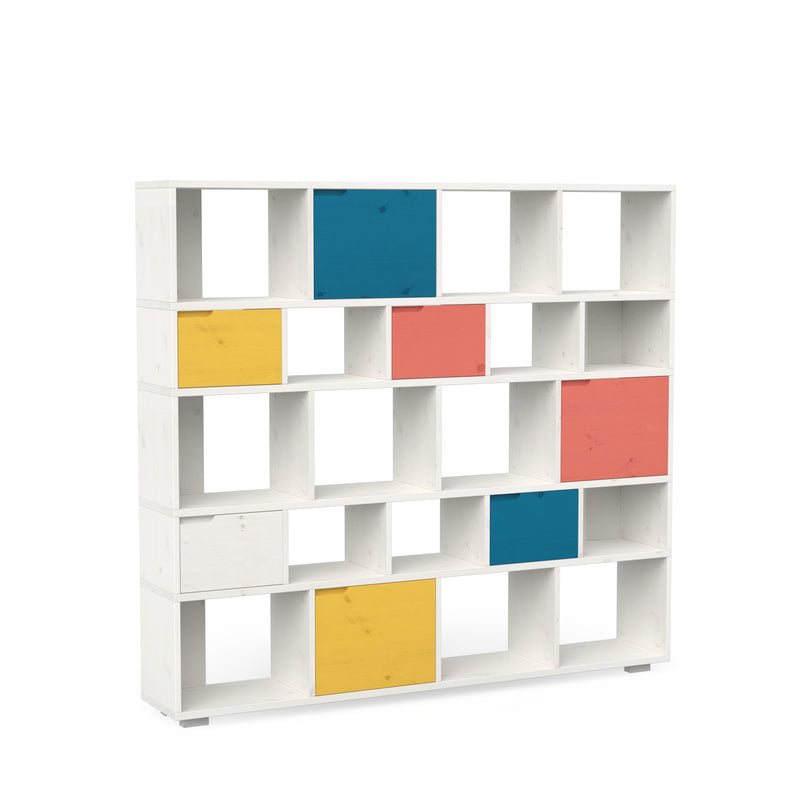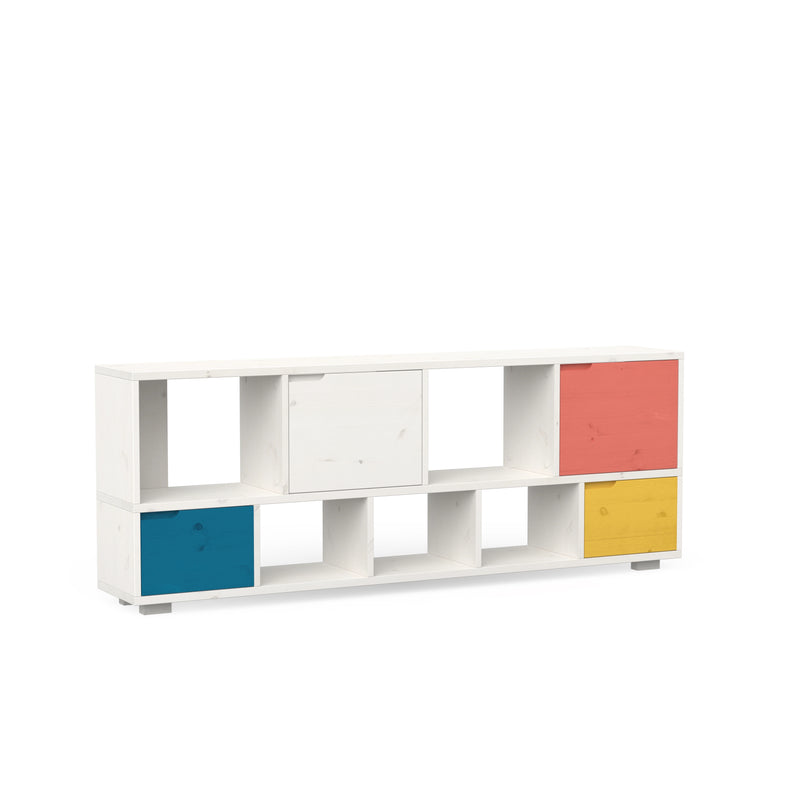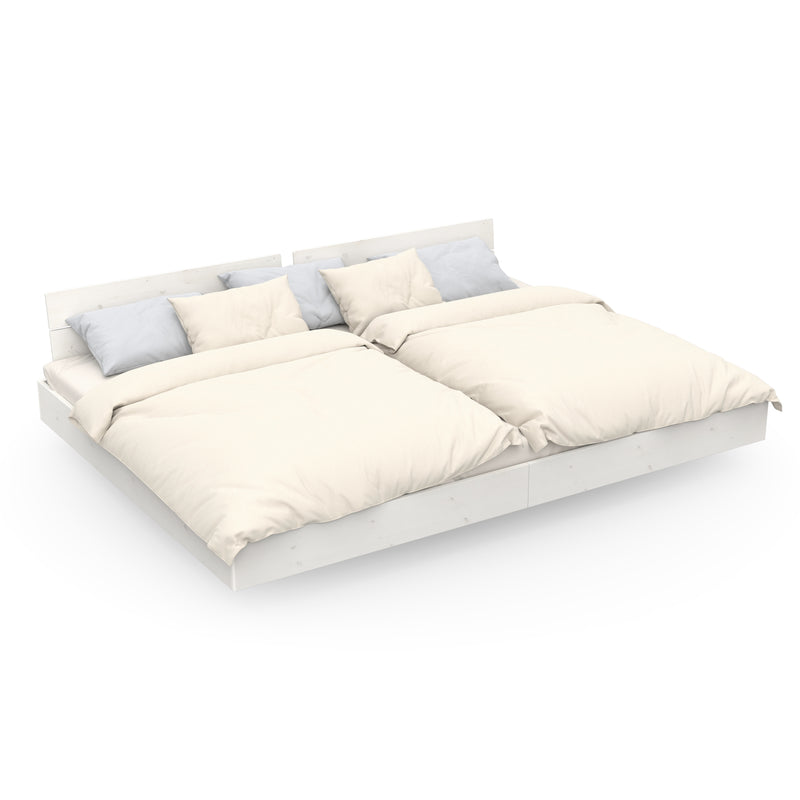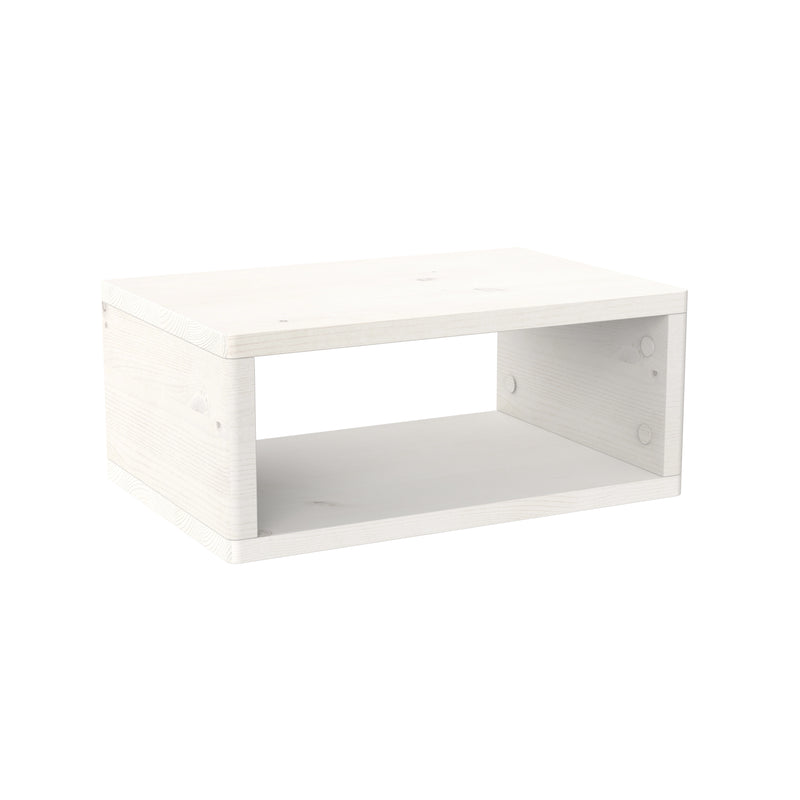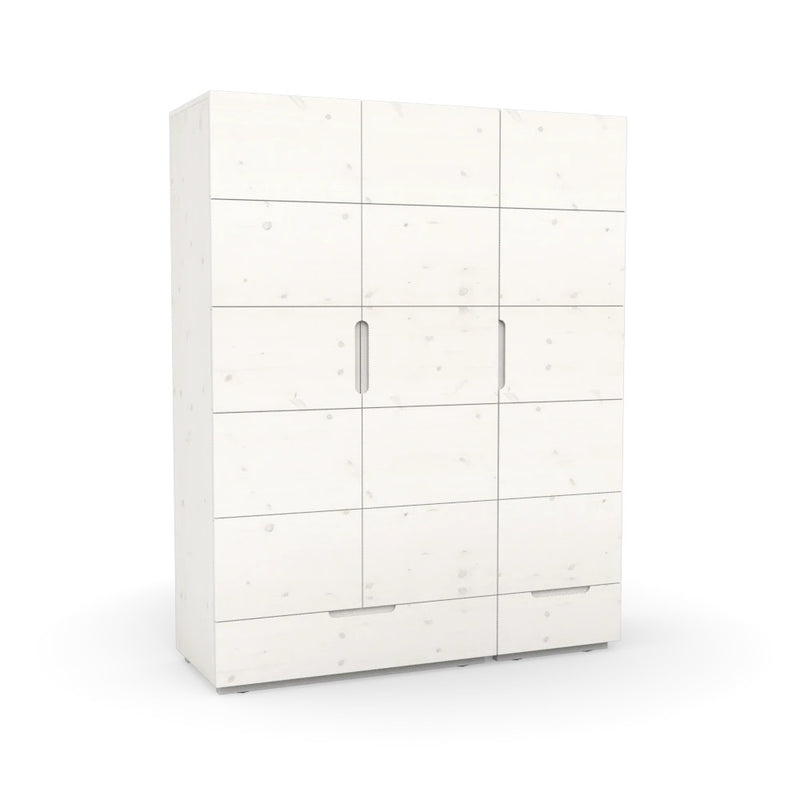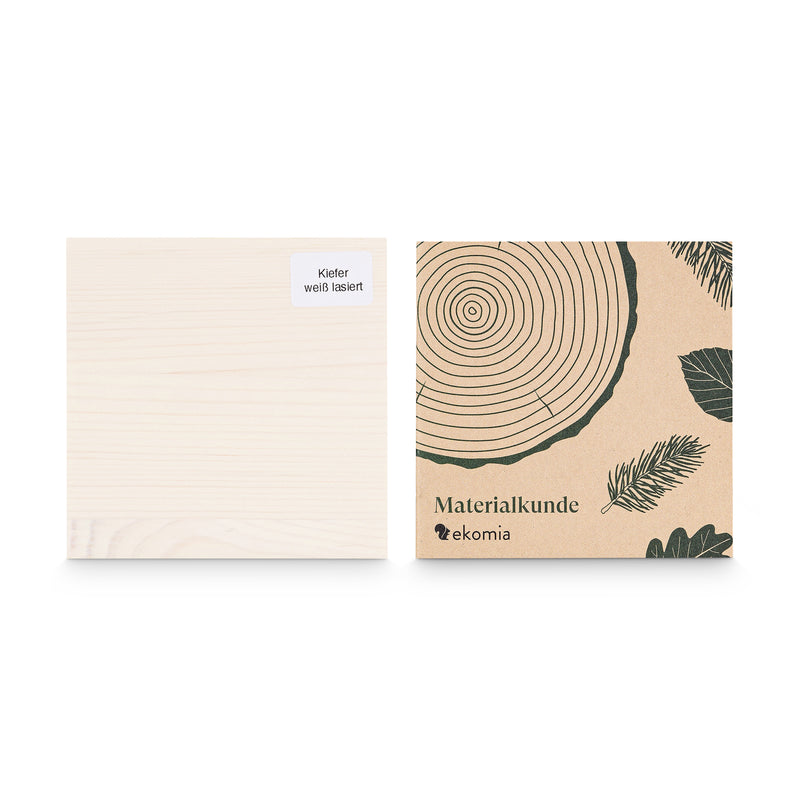Pine
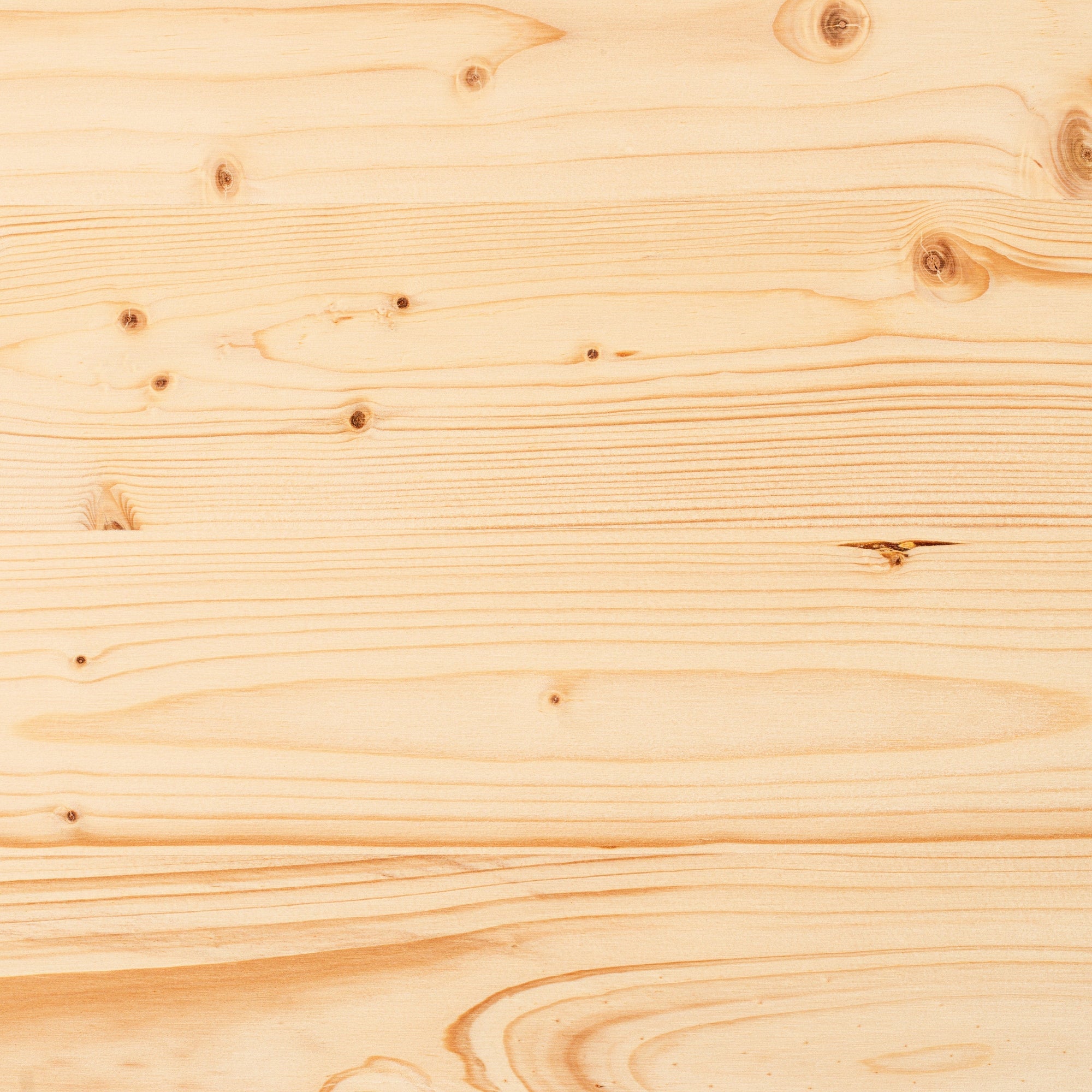
Pinewood is a light, versatile softwood with a lively grain and natural charm. It is easy to work with and is ideal for furniture, wall panelling and interior design. The colours range from light yellow to reddish brown and it takes oil and coloured glazes well.
What does pine wood look like?
Pine wood has a warm, natural appearance with clearly visible grain and sometimes prominent resin channels. The color palette ranges from pale yellow to reddish-brown and tends to darken over time.
As a natural material, pine can vary in appearance. Especially with solid pine wood, each piece of furniture shows an individual structure.
Unlike knot-free pine, more rustic versions intentionally use wood with knots and livelier grain patterns. This creates furniture with a distinctive, natural character.
How is pine wood treated?
Pine is often oiled, waxed, or glazed. It absorbs oil and pigments well, making it suitable for colored or more opaque finishes. However, some glazes may allow resin from knots to bleed through over time, causing visible stains.
Lacquered surfaces provide high protection but often appear less natural. Oiled pine can breathe and absorb and release moisture. It is easy to maintain and can be re-oiled or sanded if necessary – ideal for everyday use and long-lasting beauty.


Environmental footprint of pine wood
Pine wood is a renewable resource and one of the most sustainably available softwoods in Europe. It grows quickly, is locally available, and causes low transport emissions – a clear environmental advantage.
1. Sustainable sourcing
Pine trees grow in large parts of Europe, especially in Germany, Poland, and Scandinavia. Sustainable forestry with certifications like FSC and PEFC ensures controlled use and reforestation.
Monoculture pine forests have been criticized – where large areas are planted exclusively with pine, often for economic reasons. These forests grow quickly and are easy to manage but are ecologically problematic: they offer little habitat for wildlife, are more vulnerable to pests, storm damage, and fires, and store less water than diverse mixed forests.
In Germany and Central Europe, there are ongoing efforts to convert such forests into mixed woodlands – especially to make them more resilient to climate change.
2. Processing and energy efficiency
Pine is particularly energy-efficient to process. It is easy to saw, plane, and dry – ideal for resource-saving production. Local sourcing also significantly reduces the CO₂ footprint.

3. Durability
Pine wood is long-lasting when properly treated. It is softer than hardwoods but easy to maintain and repair. With an oiled surface, it remains functional and beautiful for many years.
4. Reusability
Wood can't be fully recycled, but pine can be easily repurposed, reworked, and reused. It can be sanded, glued, or re-oiled – perfect for long-lasting furniture and creative upcycling projects.
5. Biodegradability
Pine is a fully biodegradable material that breaks down naturally within a short time. In waste processing, it is usually thermally recycled – burned CO2-neutrally to generate energy.
Technical properties of pine wood
| Property | Value |
|---|---|
| Wood type | Softwood |
| Density (raw) | 0.45 - 0.55 g/cm³ |
| Compressive strength | 35 - 50 N/mm² |
| Bending strength | 70 - 90 N/mm² |
| Brinell hardness | 12 - 23 N/mm² |
| Modulus of elasticity | 8,000 - 10,000 N/mm² |
| Durability | Adequate for indoor use |
| Weather resistance | Low, suitable for outdoor use only with treatment |
| Color | Pale yellow to reddish-brown |
| Workability | Very good, easy to saw and plane |
| Uses | Furniture, interior finishing, paneling, moldings, DIY projects |
Pine wood at ekomia
Pine is lightweight, sustainable, and among the most affordable solid woods. Our first furniture collection (Scandinavian Collection) was made from pine with the aim of offering affordable, ecological furniture. To this day, it remains one of our best-selling lines.
We use exclusively Swedish pine from responsibly managed forests with FSC certification. Nordic pine grows more slowly, making it denser and lower in resin than Central European pine – ideal for furniture making.
For aesthetic reasons, we always finish pine with a white ecological glaze that is semi-transparent and allows the grain to subtly show through.

Questions & answers for Pine
Here we answer some questions about Pine that are frequently asked by other users.
Do you still have any questions?
Do you have any questions or comments on this topic? Write a comment, we will be happy to answer.
